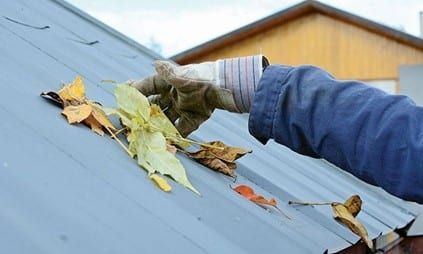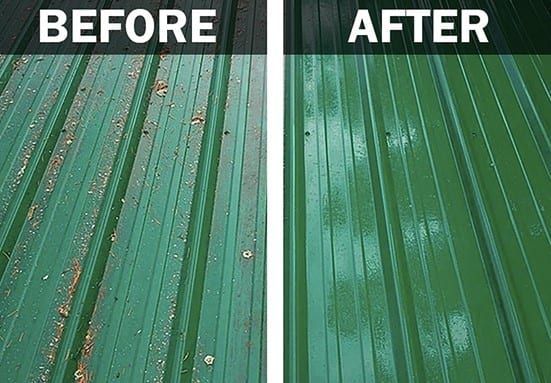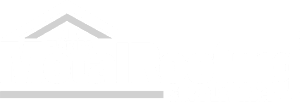Metal Roof Maintenance
Spring is right around the corner! You know what that means… Time for a Spring cleaning!
Metal roofing is known to be one of the longest lasting roofing choices (and a low maintenance material at that). However, once installed, the proper maintenance is essential to preserve its durability, performance, and good looks for decades to come.
What causes damage to metal roofing?
The main causes of damage to your metal roof are dirt, leaves and residue that are left on your roof from trees or animals. This debris, if left for a long period of time, can compromise the protective coating, which will affect the longevity of the roof system. The buildup of dirt, leaves, and other elements can often lead to the growth of mold, mildew, or bacteria that can damage the structural integrity of the panels.
The accumulation of debris (such as leaves, limbs, dirt, etc.) can also hide potential leak areas or places that may be rotting or rusting. Keeping your metal roof clean is also the best way to maintain the energy efficiency of your roof system.

How often should I clean my metal roof?
Most manufacturers recommend an annual cleaning, at minimum, to keep the panels free of the elements that can cause the panel coating to be damaged. This annual cleaning usually consists of a light pressure washing* or simple hosing off debris. A mild detergent may be used if water alone is not removing the dirt, dust, or debris. You will mix ¼ cup of the detergent* per gallon of water. Apply the solution using a soft bristle brush to use the lightest touch. Let stand for 5 minutes and rinse with water.
*Mild detergents can be dish soap, mild laundry detergent or a car washing liquid – NEVER USE BLEACH or other abrasive chemicals. Care must be taken when using a pressure washer as some high-pressure washers at a close distance to panels can cause damage to the panels coating. When cleaning metal roofing, LIGHT touch is imperative.
If your roof has an overhanging tree, you might consider a cleaning more often so that leaves or limbs do not accumulate. You might also consider a cleaning and inspection before the arrival of a storm or harsh weather to ensure your panels are in the best possible shape.

Deep cleanings should be done every 3-5 years, depending on your building location, weather conditions, etc. A deep cleaning involves a solvent or alcohol-based solution. These solutions work best for tree sap, grease or oils that may occur. Since most solvents are flammable and/or toxic, please advise the manufacturer’s MSDS (Material Safety Data Sheet) before use. Some require PPE (personal protective equipment) such as gloves, goggles, etc. Common cleaners for this type of non-water-soluble cleaning include: Isopropyl (rubbing alcohol), Mineral Spirits, Turpentine, or VM&P Naptha.
What should I avoid using on my metal roof?
It is crucial to avoid products and tools that will scrape, scratch, or grind down the surface or coating and leave other damage to the finish of the metal panels. Abrasive cleaning methods will eventually wear down the finish and leave panels vulnerable to corrosion. Likewise, the misuse of accepted cleaning agents can void any manufacturer’s warranty for the affected surfaces.
No matter what level of cleaning that needs to be done, the following are never ideal for use on coated metal panels: wire brushes, abrasives, steel wood, sandpaper, high-pressure power washers, scouring powders, paint thinners and paint removers.
More Information
No matter how often you clean your roof, it is imperative to first refer to the panel manufacturer’s recommendations and warranty protocols. Some warranties require a professional building cleaning company, a specific cleaning timeline or specific cleaners to be used. Always refer to your specific metal roofing system warranty before attempting any cleaning.
*These tips for cleaning metal panels are based on general circumstances and can get progressively more detailed for different jobs. They should not supersede, and are not a replacement of, any metal panel manufacturer’s instructions or warranty requirements, including those provided by Mid-Florida Metal Roofing Supply, Inc.
Contact your Mid Florida Metal Roofing Representative for more information regarding your metal roof warranty specifications or cleaning tips.
Call us today! 352-742-7070
Or send us an email: sales@mfmrs.com
About Mid-Florida Metal Roofing
Mid-Florida Metal Roofing Supply has been in the business for 16 years. MFMRS manufactures a wide variety of metal roofing products including Multi-Rib (AG), PBR/R, 5V and Standing Seam in a Galvalume mill finish, as well as a wide variety of colors to meet all your preferences.
We also manufacture an extensive list of flashing profiles to meet any standard or custom application as needed. We specialize in custom profiles serving a wide variety of needs in the construction industry. Our profiles can also be ordered in custom lengths up to 21ft.
We are committed to producing quality products in a timely manner and pride ourselves with friendly personal customer service.

